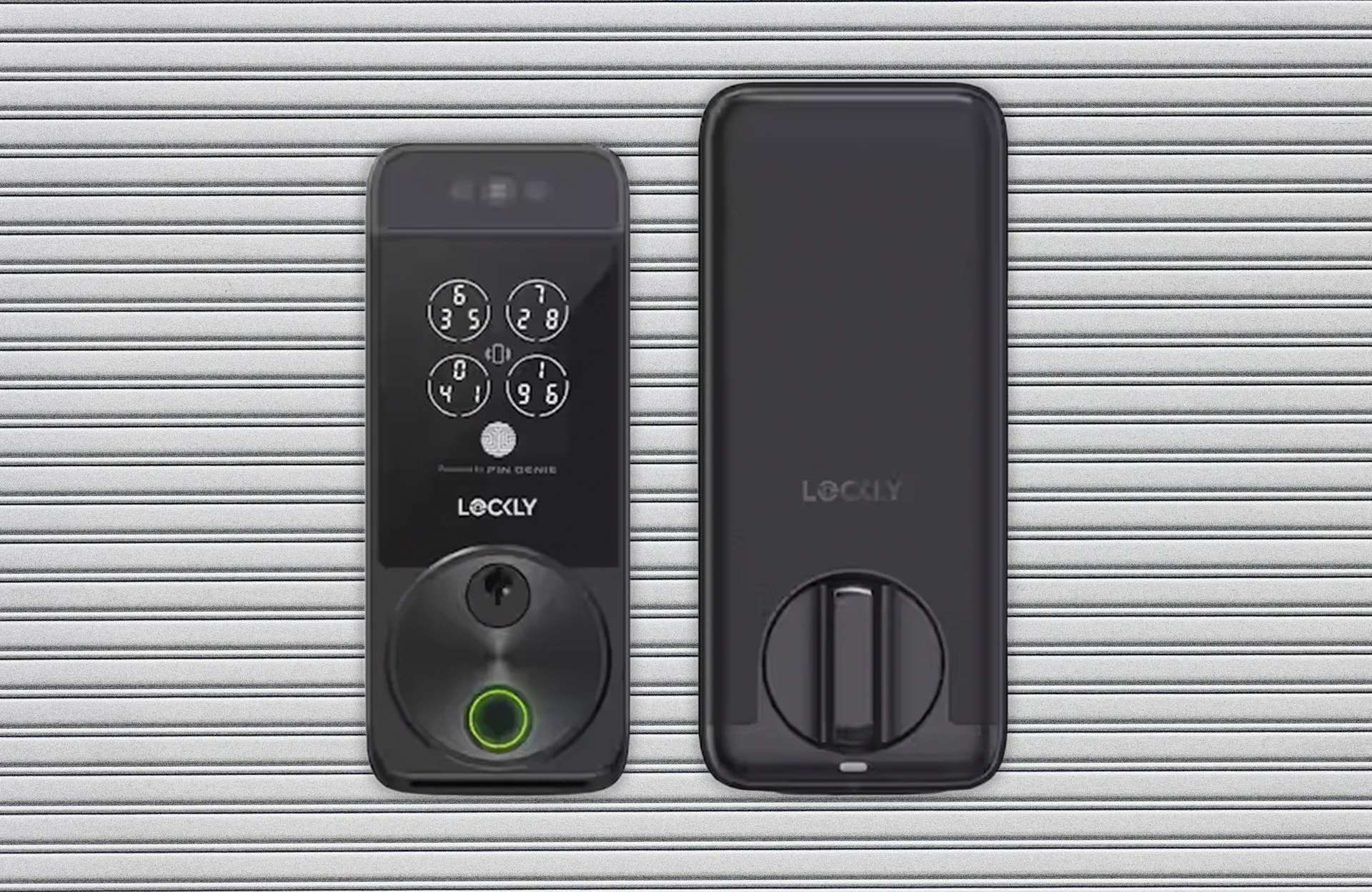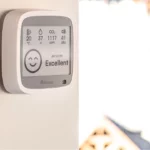
This innovative smart lock uses infrared sensors to detect when I approach, recognize my face, and unlock the door automatically.
Imagine walking up to your front door, arms full—maybe you’re juggling a child and pool gear, or returning from a brisk walk without wanting to carry your keys. I’ve tried different options like geofencing, which unlocks the door when my phone is nearby, or using a fingerprint scanner. But with the Lockly Visage, part of Lockly’s Zeno line introduced at CES 2024, you don’t even need your phone or a hand free. This lock uses infrared sensors to recognize your face and unlock the door as you approach. If facial recognition isn’t your thing, it still supports entry methods like fingerprints, access codes, or even physical keys.
It’s the first time facial recognition has been integrated into a smart lock that’s readily available for homeowners and renters. Similar technology has existed in security cameras and doorbells, but this is the first lock that can identify you and unlock itself based on your face. While setup had its challenges (more on that later), the lock’s performance impressed me. It consistently recognized me, even with sunglasses on or with the sun at my back.
Installation and Setup
Getting the Lockly Visage up and running requires a bit of patience. Physically installing the lock took about an hour, involving a Phillips-head and flathead screwdriver to replace my old lock. Be sure to charge the battery beforehand. The process isn’t too complicated, but since you’ll need to fully disassemble your existing lock, I wouldn’t recommend it for renters unless you’re confident in your ability to reassemble it perfectly.
Once the lock is installed, don’t insert the battery right away. That’s where I stumbled initially. The Bluetooth connection, which is crucial for setting up the lock, only stays active for a few minutes after the battery is inserted. If you aren’t ready, it might time out. Thankfully, Lockly has promised an app update to address this issue. Speaking of the app, you can choose between the old Lockly app or the new Lockly Home app (designed for the Zeno series). I found the latter much more user-friendly, and Lockly plans to add support for older products to it soon.
Before you start the setup, download the app and locate the Activation Card in the box—it’s important to keep this card even after setup. With the app ready and the card in hand, insert the battery to start the Bluetooth setup process. The app will guide you through creating an account, connecting to Wi-Fi, and setting up a door code.
Facial Recognition Setup
If you want to use Visage ID, the facial recognition feature, the setup is straightforward once you get past the Bluetooth timing issue. It’s best to set this up while your Bluetooth connection is active. If your Wi-Fi doesn’t sync immediately, you can skip that step and deal with it later—it’s not necessary for face recognition.
To set up Visage ID, head to the Access page in the app, select your name, and follow the prompts to scan your face. The lock uses infrared sensors to detect and recognize you. Setup took me less than a minute, with simple prompts to move my head from side to side, similar to setting up Face ID on a smartphone.
In the same area of the app, you can also add fingerprints and customize your access code. While I liked using the fingerprint option for speed, the facial recognition was equally fast—both methods felt nearly instant. My husband and sister, however, preferred using access codes or the physical keys included with the lock.
How the Tech Works
So, is the Visage using a camera? Yes and no. The lock employs infrared (IR) sensors to detect when a person approaches and confirm it’s a real person—not just a photo or a model. While it technically has camera capabilities, it doesn’t function like a typical security camera that records video or takes snapshots.
Two 2-MP infrared sensors are built into the lock, designed like binoculars. They work together to detect a living person and recognize their face. The sensors have a 2.6-foot range, and the lock can respond and unlock in less than two seconds. I was impressed with how quickly the lock reacted, even when I wore sunglasses or had strong sunlight behind me.
Standard Features
Beyond facial recognition, the Visage includes the usual smart lock features. There’s an auto-lock option that you can customize, and it’s surprising how often my door auto-locked, reminding me of how frequently we forget to lock it ourselves. You can also assign custom codes to different people, making it easy to track who’s coming and going.
A door sensor, which connects directly to the lock, is included. It may not be the prettiest setup, with a visible wire connecting the lock to the sensor, but it eliminates the need for a separate Bluetooth connection. It worked reliably and allowed me to check whether the door was both closed and locked via the app.
The lock is also compatible with major voice assistants—Amazon Alexa, Google Assistant, and Apple Home. Setup was easiest with Alexa and Apple, both of which have direct integration in their apps. There’s also a HomeKit code on the lock and the activation card for Apple users, and the lock supports Matter for broader smart home compatibility.
Final Thoughts
The Visage offers the convenience of facial recognition without the hassle of video storage or feeds. It’s a futuristic touch, unlocking the door as soon as I approach, no hands needed. While it doesn’t have full camera functionality like a video doorbell, I found that feature unnecessary for my needs. However, if you want a lock with a camera, Lockly offers the Vision model with built-in video capabilities.
For anyone looking for a smart lock that unlocks hands-free, the Lockly Visage is a solid choice. You may still want a video doorbell for a complete security setup, but this lock’s facial recognition gives a seamless, high-tech feel that’s hard to beat.







